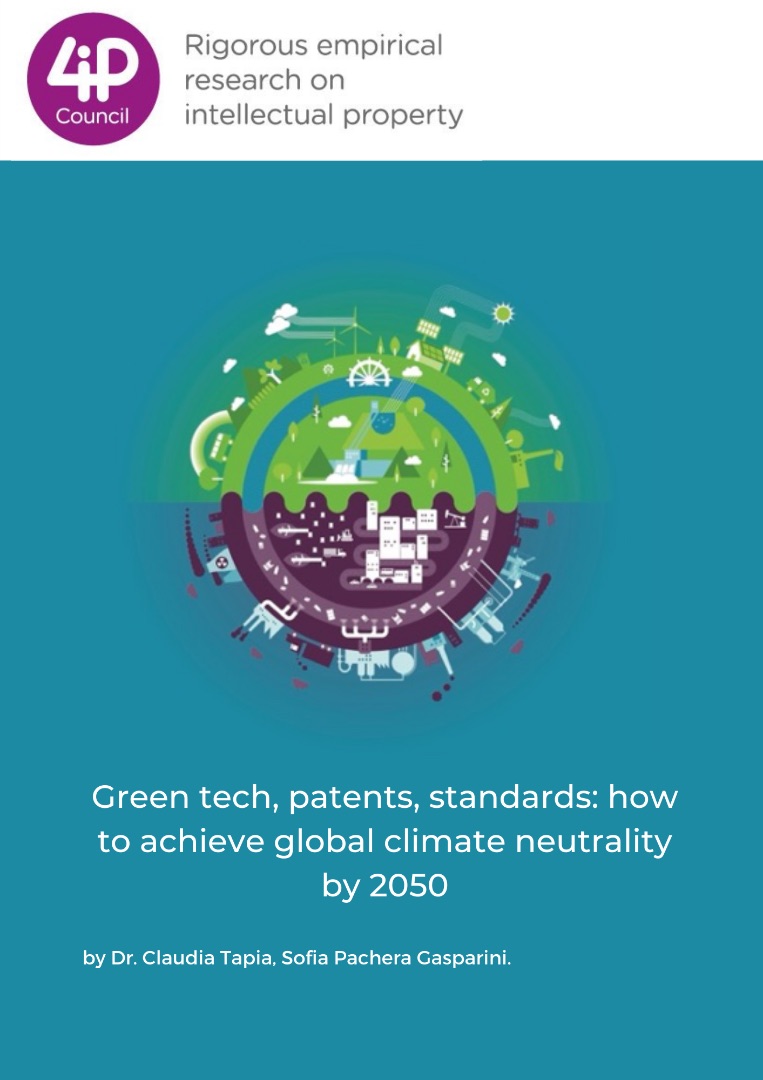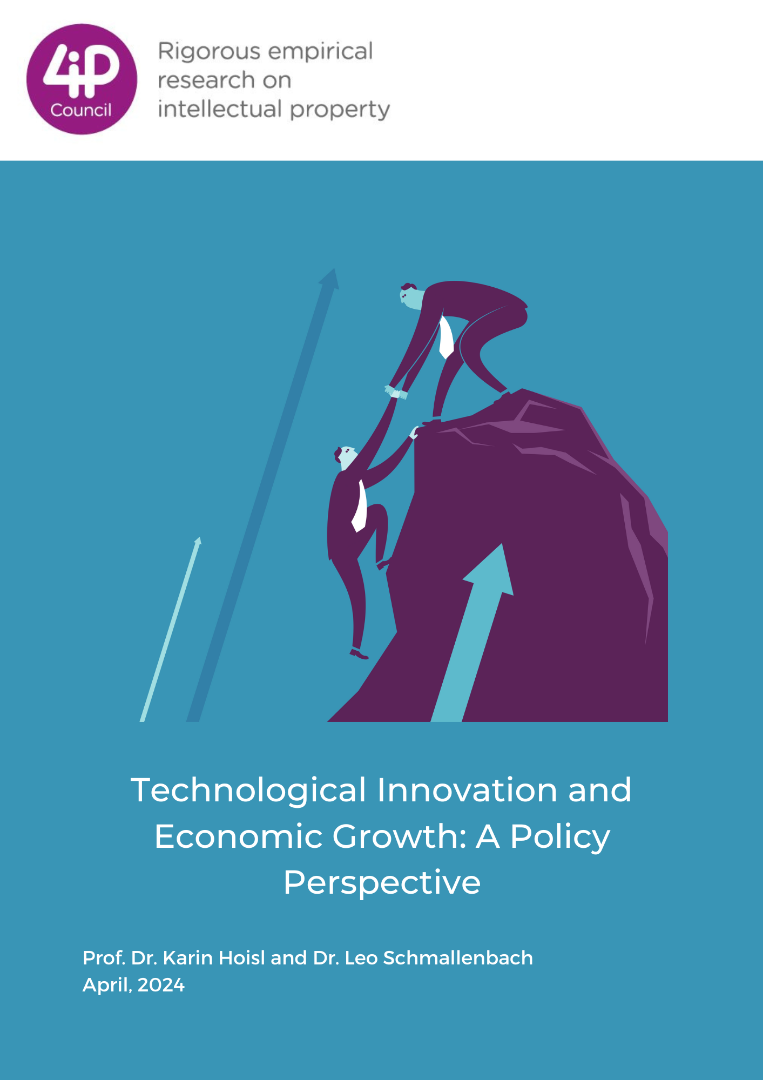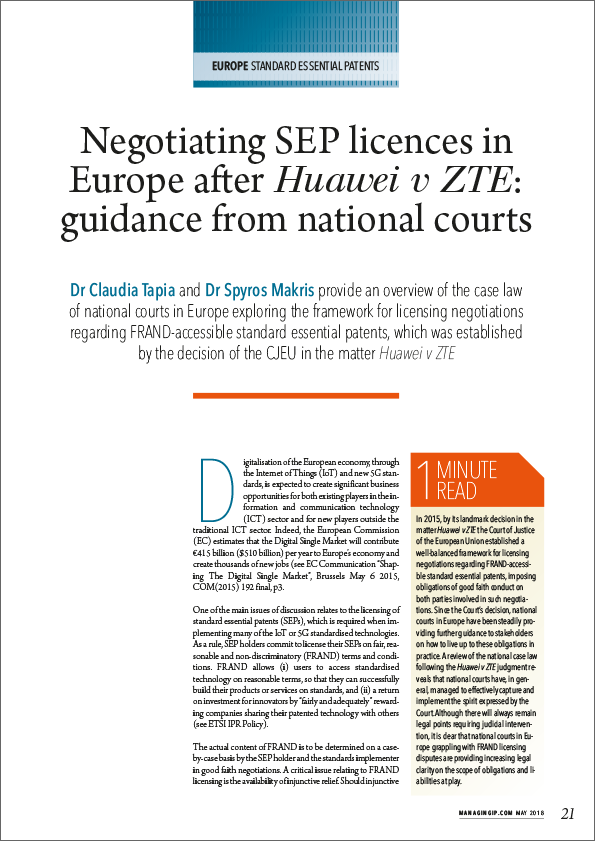Green tech, patents, standards: how to achieve global climate neutrality by 2050
Sofia Pachera Gasparini and Claudia Tapia*
I. Introduction
2021 was one of the seven warmest years recorded in history. At this rate, scientists warn, the first threshold of 1.5°C (global warming) will likely be reached by 2031. In that event, it is believed, the ecosystems will suffer multiple risks, such as biodiversity loss and extinctions of species. Moreover, with 1.5°C around 14 per cent of the population is expected to face acute heatwaves at least once every five years. With 2°C the foreseen percentage rises to 37.5 Nevertheless, one does not need to wait until 2031 to experience the impact of climate change.
While several regions in western Germany, Belgium, Switzerland, the Netherlands and central China are emerging from a catastrophic flooding, Australia is becoming hotter, and more prone to extreme heat, driving to an increase in fires by at least 30% since 1900. Meanwhile, households in some US cities are breathing toxic smoke from the wildfires burning in the western part of the country. In India, citizens are suffering more extreme heatwaves than ever, with some cities already reporting up to 55°C in 2022. Africa is undergoing heavy rainfall combined with lessen water resources and food insecurity, leading to growing population displacement. These are but a few examples of the negative impact of climate change. Furthermore, the Russian’s recent invasion of Ukraine has put in evidence Europe’s dependence on Russian oil and gas, reinforcing the need of Europe to accelerate the transition to green power.
As a result, governments around the globe are increasingly acknowledging the need to take immediate regional, national and international action. In Europe the aim is to become a carbon-neutral continent by 2050, in line with the international commitments undertaken under the United Nations (UN) “Paris Agreement”. To accomplish this, as the Organisation for Economic Co-operation and Development (OECD) rightly points out, “rapid economic, social and technological transformations” are required.
For the ‘green’ transformation to become a reality, the use of technologies seems indeed inevitable. This may sound contradictory at first glance as many technological products cause serious damage to the environment. For instance, cars, airplanes, factories and power plants significantly contribute to pollution by producing greenhouse gasses. Greenhouse gasses, like carbon dioxide (CO2) and carbon monoxide, absorb and reflect heat to the planet's surface, increasing global warming. Cars alone were responsible for around 12% of European Union (EU) CO2 emissions and 43% of total transport sector emissions in 2020. On a positive note, technologies can be ‘clean’, meaning that they produce hydrogen with very low to zero carbon emissions, facilitating the successful transition towards a carbon-neutral economy. For example, electric vehicles and clean hydrogen cell systems can mitigate the environmental harm generated by cars and airplanes. Technologies are, therefore, 'two sides of the same coin’: they are frequently considered the root of the climate change problem, but they may also become (at least part of) the solution. In other words, technologies can evolve from ‘polluting’ to ‘green’.
In this context, the paper proposes a strategy to effectively develop and deploy green technologies (green tech) globally. The structure of the paper is as follows: Part II explains green tech and offers some examples. Part III provides some insights into the international legal framework to address climate change. Part IV emphasises the need for massive R&D investment in order to create green tech and role of patents in encouraging it. Part V analyses the main elements for the success of standardisation in developing global cellular standards. Part VI concludes.







